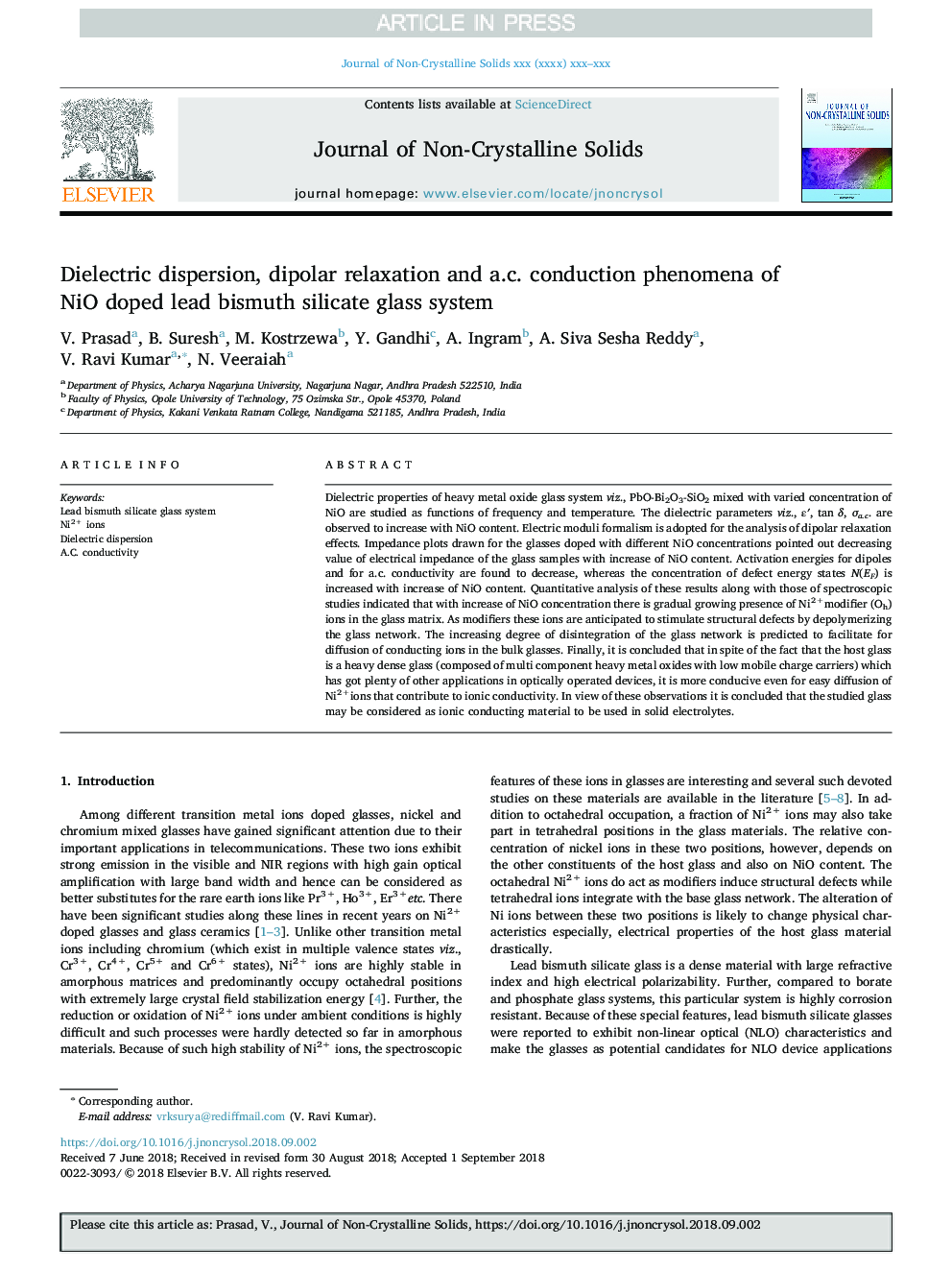| کد مقاله | کد نشریه | سال انتشار | مقاله انگلیسی | نسخه تمام متن |
|---|---|---|---|---|
| 10155577 | 1666352 | 2018 | 8 صفحه PDF | دانلود رایگان |
عنوان انگلیسی مقاله ISI
Dielectric dispersion, dipolar relaxation and a.c. conduction phenomena of NiO doped lead bismuth silicate glass system
دانلود مقاله + سفارش ترجمه
دانلود مقاله ISI انگلیسی
رایگان برای ایرانیان
موضوعات مرتبط
مهندسی و علوم پایه
مهندسی مواد
سرامیک و کامپوزیت
پیش نمایش صفحه اول مقاله

چکیده انگلیسی
Dielectric properties of heavy metal oxide glass system viz., PbO-Bi2O3-SiO2 mixed with varied concentration of NiO are studied as functions of frequency and temperature. The dielectric parameters viz., εâ², tan δ, Ïa.c. are observed to increase with NiO content. Electric moduli formalism is adopted for the analysis of dipolar relaxation effects. Impedance plots drawn for the glasses doped with different NiO concentrations pointed out decreasing value of electrical impedance of the glass samples with increase of NiO content. Activation energies for dipoles and for a.c. conductivity are found to decrease, whereas the concentration of defect energy states N(EF) is increased with increase of NiO content. Quantitative analysis of these results along with those of spectroscopic studies indicated that with increase of NiO concentration there is gradual growing presence of Ni2+modifier (Oh) ions in the glass matrix. As modifiers these ions are anticipated to stimulate structural defects by depolymerizing the glass network. The increasing degree of disintegration of the glass network is predicted to facilitate for diffusion of conducting ions in the bulk glasses. Finally, it is concluded that in spite of the fact that the host glass is a heavy dense glass (composed of multi component heavy metal oxides with low mobile charge carriers) which has got plenty of other applications in optically operated devices, it is more conducive even for easy diffusion of Ni2+ions that contribute to ionic conductivity. In view of these observations it is concluded that the studied glass may be considered as ionic conducting material to be used in solid electrolytes.
ناشر
Database: Elsevier - ScienceDirect (ساینس دایرکت)
Journal: Journal of Non-Crystalline Solids - Volume 500, 15 November 2018, Pages 460-467
Journal: Journal of Non-Crystalline Solids - Volume 500, 15 November 2018, Pages 460-467
نویسندگان
V. Prasad, B. Suresh, M. Kostrzewa, Y. Gandhi, A. Ingram, A. Siva Sesha Reddy, V. Ravi Kumar, N. Veeraiah,